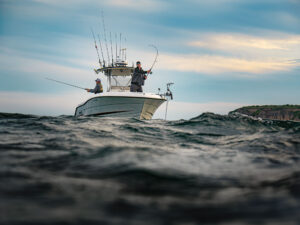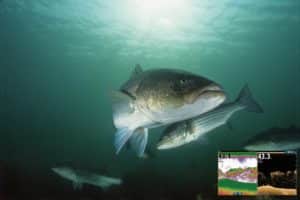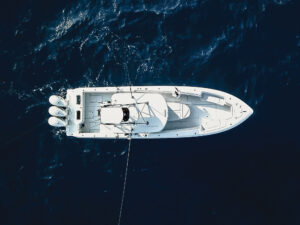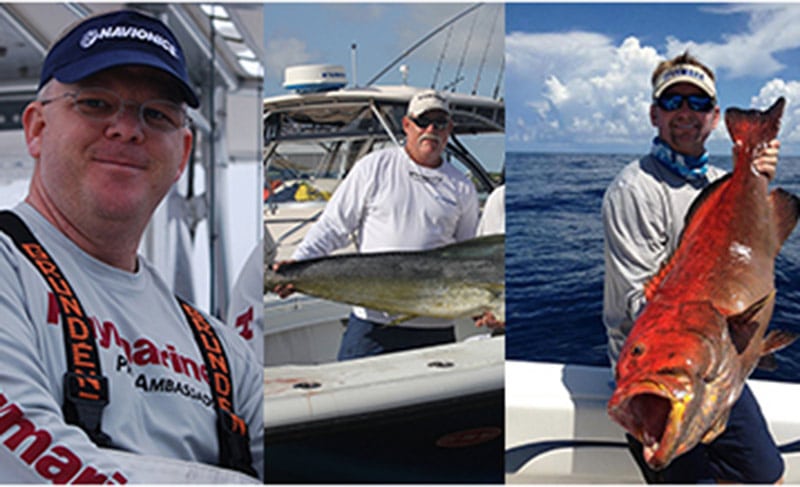
captains’ blogs on electronics
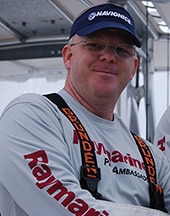
Capt. Terry Nugent, Riptide Charters, Cape Cod, Massachusetts, riptidecharters.com
Electronics: Raymarine e-Series
Types of fishing you do: Charters for tuna, stripers, offshore
Your advice for first-time buyers: The first-time electronics buyer can be overwhelmed with the vast array of options available to outfit a new boat. My first piece of advice is to keep it simple to start and build your system as you get more comfortable with it. Starting with an MFD (multifunction display) is the best option. Today’s MFDs allow you to expand your system from a basic one-screen package with no add-ons, all the way up to five-plus screens with multiple radars, sounders and a host of other peripherals. If you start with one of these MFDs with a built-in sounder/fish finder you already have a great beginner’s system and a solid foundation to build from.
For the “run-and-gun” style of fishing I do with my charters, I find that my radar is the single-most important addition to the basic system. I use my radar from the time I leave the dock until the second I return. Radar is not just for poor-weather navigation. I use my radar to find birds actively feeding over fish on the surface. The extended search range my radar gives me allows me to “see” entire bodies of water without actually driving over every square inch of the area with the boat. This saves me time, effort and fuel.
When conditions do get worse or the sun goes down, my radar allows me to safely keep fishing and navigating without worrying about hitting something or being hit by another boat. While you can certainly navigate with your GPS in these restricted conditions, having radar on the boat makes things exponentially easier and safer.
Once you have your basic system in place, the best advice I can give to any new electronics owner is to learn to use your new system to the best of your ability. Having a great electronics package is of no use if you can’t run it. Radar is no help if you’re suddenly in the fog and can’t interpret the returns on the screen. Practice using your equipment to navigate from place to place even on nice calm sunny days. Use your radar when you can visually see the targets and match them to the radars returns. If you practice with your electronics every time you’re out, when you need them you’ll be comfortable using them and won’t be scrambling to find an owner’s manual.

Capt. George Mitchell, Jupiter, Florida, fabulousfishing@aol.com
Tournament fisherman and licensed captain
**Boat/Electronics: **2013 36-foot Yellowfin center-console. Two 14-inch Furuno TZTouch units, DRS4D 24-inch radome, GP330B, CHIRP sounder, FA30 AIS receiver, RD33, NavPilot 711/OB Safe Helm Autopilot, BBWX weather receiver, two FM4000 VHF radios, Fusion 700 Stereo with JL speakers, subs, and amps.
Types of fishing you do: I do a lot of tournament fishing all over the country. From the KDWs [kingfish, dolphin, wahoo events] here along the East Coast by my hometown, swordfish tournaments in the Keys, tuna, wahoo and marlin tournaments in the Gulf of Mexico, striper and shark tournaments in the Northeast, and kingfish tournaments just about everywhere.
Your advice for first-time buyers: I’ve built 12 25-foot plus offshore boats in the last 20 years and have had all kinds of electronics, from paper recorders and Lorans to the most high-tech stuff there is on my new Yellowfin. I’ve made mistakes by going on the cheap. I’ve made mistakes by not glassing in transducers, and I’ve made more mistakes by not utilizing my electronics to their full extent.
First off, see what room you have in your boat. If it’s a new boat, there’s a good chance the builder or salesman will have a handle on what will fit. If it’s a used boat, check to see what it has currently, and better yet what accomodations have been made for rigging.
Most boat builders add extra “snakes” to a build prior to wrapping up the wiring. Snakes are nothing more than sections of string or light rope that run thru wire chases, in case you need to add to the system. Remember if you use one, pull another snake as well!
Once you get a feel for what your space limitations are, compare this to your wallet and your desires. Today’s world is all about speed, simplicity and value! I gotta tell you, I never thought I would text, much less have a smartphone — now I wouldn’t be without it. And, I owe a lot of my electronics knowledge to my smartphone experiences!
Most of todays [electronics] units are multifunction. My Furuno TZTouch 14s are great. I can add all kinds of stuff without changing the display. Let’s say your console has room for a 14-inch TZ: boom, get it. Now you want to add radar. Is your [hard] top ready? Again, most builders plan for these options, but check before you write the check!
Today’s digital radars are pretty lightweight. My 24-inch radome weighs only16.5 pounds. But keep in mind you will need a strong surface to mount it to. You may be able to retro your top to accommodate, but be wary of details, oftentimes there are spreader-light wires and such running through the pipes. For a tip: There might not be a snake run through the top, but an existing wire can act as one as long as there is room to pull it plus another through.
Once you decide what you want and what your wallet can handle, it’s time to deal. For the new boat buyer, you can often times get the dealer to do the install, but you can also get prices from your local electronics guy. There’s also the DIY factor, which I’m allergic to! It’s too easy for me to make mistakes, and way too expensive to pay a guy to come in behind me and clean it up.
Touchscreens are the way to go if you have the wallet and the room, and not just because of the “touch” feature. I love the fact that my TZs are edge-to-edge glass. This is great for viewing, but even better for maintenance. I joke about the fried-chicken-and-sunblock factor, but it’s easy to keep a clean screen, and man are they viewable.
Once you narrow your wish list down, it’s time to get critical. Explore the equipment and its capabilities, look to see “what’s included,” make sure there are no hidden expenses. Also check to see if your equipment is able to interface with your boat and motors. For me, in most of my tournaments I gotta be fast. I want to be first to the fish; the dominant fish is first. But I also gotta get back in time for the weigh-ins. I always leave myself the prescribed amount of time to get back, plus 50 percent more. You never know when an unexpected weather issue can arise and slow you down.
I love the fact that I can separate my screen to overlay the weather on my plotter, use active radar, and have a nav display that shows course over ground, bearing, course to steer, as well as time to go. When it’s all tied together through my gateway link, I know all I need to be back on time, every time.
I guess my last chunk of advice is to take your time to learn the equipment. I’ve learned so much more about my TZs by simply messing around with ’em on the off days. I also browse the Internet sites for tips and such. Furuno has a cool forum that has lots of folks helping others out. Bottom line is utilizing your equipment to the max can really help you be successful!
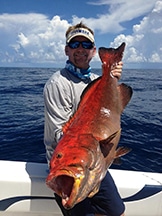
Capt. Bill Platt, Dickinson Texas
Electronics: In my inshore boat, I have a Garmin 740 touchscreen with a transom-mount transducer. On my offshore boat, I have two Garmin 7215s, Gmx51 weather, 6kw open-array radar, AIS, Garmin VHF, GSD26 and a 3kw CHIRP transducer.
Types of fishing you do: I run some corporate charters and fish about 15 tournaments a year for kingfish, wahoo, marlin and deep-dropping for swordfish and grouper.
Your advice for first-time buyers: Buy electronics to fit your needs — match your electronics to the kind of fishing you plan on doing. Inshore I would go with 5- to 7-inch displays (Garmin 540 or 740) with a transom-mount transducer. Those units are very user friendly with a ton of options; one is touchscreen one is not.
Offshore, when fishing to depths of 1,000 feet for snapper or grouper, swordfishing or deep-water fishing for tilefish or grouper, a 1kW transducer will work great with a GSD24 for most all-around fishing, and will read great for bottom fishing for snapper, grouper and kingfish. I recommend the [CHIRP] GSD26 with a 2kw or 3kw transducer for swords and deeper-water fish like yellow-edge grouper.


